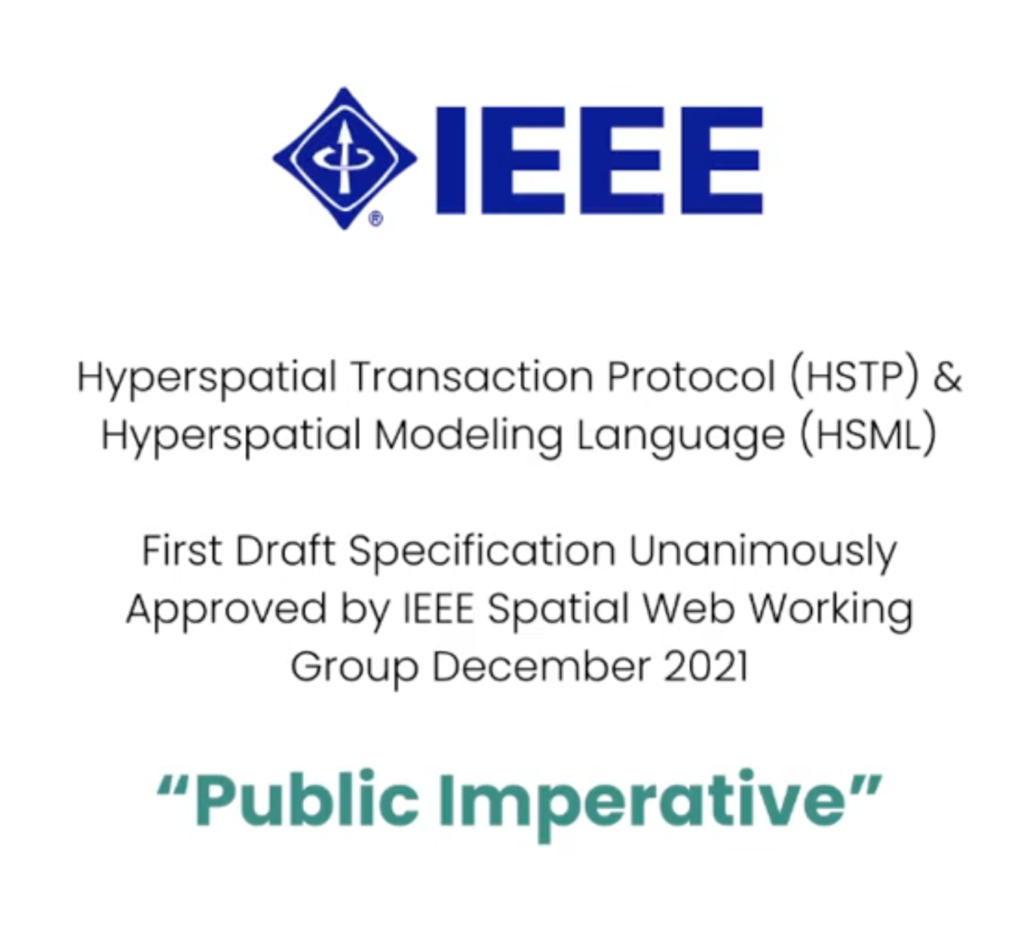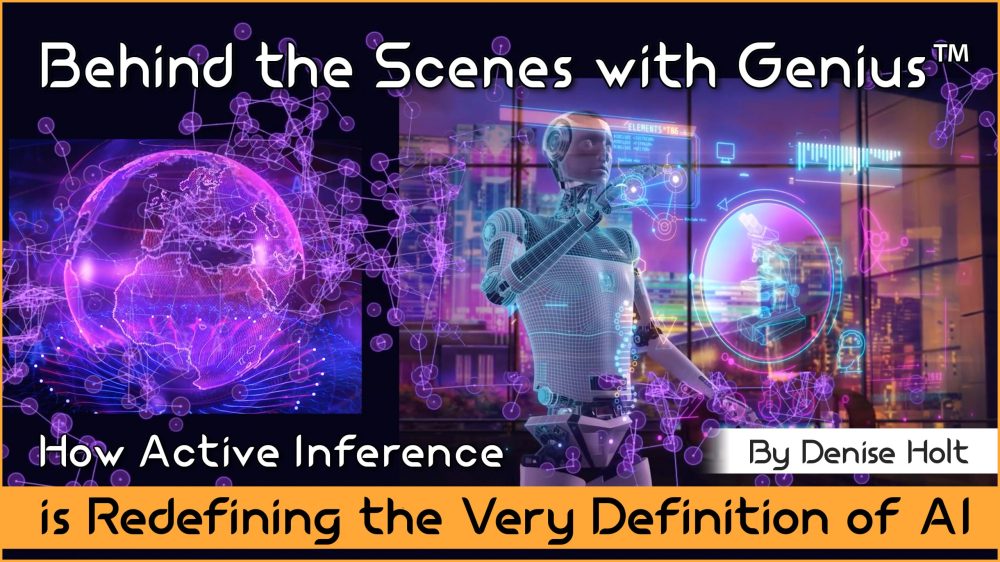
The convergence of two groundbreaking technologies is reshaping how we think about AI, automation, and intelligent systems, affecting every industry...

The goal when developing a new internet protocol is to enable universal access, connectivity, and opportunity on a massive global scale. The only way to reach this objective is to establish an environment for development that is fair and inclusive, independently controlled and operated, and provides equal opportunity for collective intelligence and input on a universal spectrum.
This is necessary for interoperability and unification. Unless there is an underlying framework tying everything on top and within the networked space together, pieces can only be fragmented and siloed, hindering communication, cooperation, and growth.
To reach the world, you have to be where the world is, and you have to let the entire world in.
Core standards allow for interoperable and governable technology to emerge, enabling free market opportunity without a competitive base.
To remain neutral and ensure unbiased progress, certain conditions must be met:
From inception, the Internet has always run on a primary protocol with core standards for everyone to then build upon.
In the 1970’s, the founding of the Internet brought us the TCP/IP protocol, allowing computers to communicate through shared text, with the killer app being email technology.
In the early 1990’s, the World Wide Web came about with HTTP and then Javascript. This enabled us to build and share websites and pages of information with interactive content hosted on web domains.
The important thing to note is that email did not disappear. While the new protocols of Web 1.0 empowered us with more advanced capabilities, the new protocol merely adds new layers of ability to the previous protocol. It does not replace it. Rather, it amplifies and expands the potential within the network.
While Web 1 was mostly a read only web, Web 2 added features that enabled users to generate and share content easily with each other using websites like Facebook, Instagram, YouTube, etc.
This is exactly where we are now with Web 3.0. The original internet protocols are too limiting for the network capabilities needed to move forward with Smart Technologies and Extended Reality interoperability requirements. HSTP (Hyperspace Transaction Protocol) enables a fully augmented experience, bridging Web 3.0 technologies, artificial intelligence, blended realities (digital and physical), and distributed ledger tech. HSTP is the Spatial Web Protocol. This is the new network protocol of Web 3.0.
Yet, email will prevail. Websites and cloud servers will still exist. HSTP will allow interaction and usability with all legacy protocols, but it will give way to a new kind of networked interaction and experience that takes full advantage of next-level technologies of artificial intelligence and mixed realities for a truly augmented human experience.
It’s very important to understand this distinction. TCP/IP enables email, but does not enable website technology which was born after. Yet the evolution into HTTP enables you to interact with websites, while still leaving room for TCP/IP to exist within this new world. The same is true with the Spatial Web Protocol. HSTP will enable you to build and function within the new network of every person, place or thing, whether real or virtual, while still maintaining function of old Web 2.0 and 1.0 protocols, yet, HTTP and Javascript can not offer that new level of connectivity. To access the new abilities, you need to advance to the next level protocol.
As history has shown, time slows down for no one, and everyone naturally wants to be on this new network because that’s where everybody is.
IEEE (Institute of Electrical and Electronics Engineers) is the world’s largest technical professional organization, “dedicated to advancing technology for the benefit of humanity.” It has been one of the largest standards bodies in the world for over 100 years, comprised of thousands of scientists and engineers from every country.
95% of all activities on the web go through IEEE standards (ethernet, wifi, etc…). Under the IEEE Internet Initiative, special attention is given to global internet policy, governance, universal access for all, cybersecurity, and privacy.
In August of 2020, Spatial Web Foundation submitted a project authorization request (PAR) to the IEEE and was granted approval a month later.

Image by Permission from VERSES Technologies
IEEE P2874 Working Group — Spatial Web Protocol, Architecture, and Governance
Project Authorization Request (PAR) Date: August 11, 2020
PAR Approval Date: September 24, 2020
Currently active
Standards Committee: IEEE Computer Society/Artificial Intelligence Standards Committee (C/AISC)
Working Group Name: Spatial Web Protocol, Architecture and Governance Working Group
An official launch took place on July 21, 2021, followed by a press release on the one-year anniversary of the PAR submission, on August 11, 2021.
The IEEE P2874 Working Group — Spatial Web Protocol, Architecture, and Governance was made public with this objective:
The mission of the Spatial Web Working Group is to further develop specifications to meet the rigorous requirement to become globally adopted IEEE standards.”
VERSES AI donated the IP, White Paper and documentation to the group for HSTP and HSML, announcing this as a “unique and historic opportunity to participate” in what has now been declared a public imperative (the highest designation) new technology standard by IEEE.
Some of the greatest minds in the world are involved.
VERSES AI has appointed Dr. Karl Friston as Chief Scientist, leading next-generation AI research and development regarding the application of Active Inference to Artificial Intelligence and a roadmap toward Artificial General Intelligence.
This Spatial Web Protocol working group has attracted top professors and PHD scientist from MIT, University College London, and other notable universities all over the globe.
The magnitude and extent of this initiative is profound.
The following are a few notable PAR Details within the IEEE P2874 working group:
5.2 Scope of proposed standard:
This standard describes a Hyperspace Transaction Protocol (HSTP) that enables interoperable, semantically compatible connections between connected hardware (e.g. autonomous drones, sensors, smart devices, robots) and software (e.g. services, platforms, applications, artificial intelligence systems) and includes specifications for: 1) a spatial range query format and response language for requesting data about objects within a dimensional range (spatial, temperature, pressure, motion) and their content. 2) a semantic data ontology schema for describing objects, relations, and actions in a standardized way 3) a verifiable credentialing and certification method for permissioning create, retrieve, update, and delete (CRUD) access to devices, locations, users, and data; and 4) a human and machine-readable contracting language that enables the expression and automated execution of legal, financial and physical activities.
5.4 Purpose:
This standard supports access, access control, security, permissioning, governance, and rights management for the Internet of Things (IoT) and, more generally, objects that are addressable via any information and communications technology.
5.5 Need for the Project:
IoT, robotics, automation, and other advances in computation and in the cyber-physical realm are resulting in billions of computers and connected devices sensing, making sense of, moving through, and reporting data about our world. This has created an urgent need for a spatial network protocol standard through which disparate hardware and software systems can interoperably interact while respecting societal and legal policies and transact; executing contractual and financial obligations in ways that establish and maintain trust, privacy, security between human and digital systems.
The need to represent spatial, semantic, and societal data extends beyond the real world and into virtual spaces (e.g. Augmented Reality, Virtual Reality) so HSTP must be designed to accommodate all of these.
5.6 Stakeholders for the Standard:
Connected Hardware Manufacturers, Software Developers, Telecom Carriers, Chip Manufacturers, Policy-makers and Regulators
8.1 Additional Explanatory Notes:
While we are focused on the base standard for this protocol, due to its potential broad applicability we anticipate the need for a family of standards to address technology-oriented and industry-specific applications and considerations (for example, drones, sensors, 5G, government, supply chain, smart city) and associated ethical implications.
To promote consistency and to avoid duplicating other efforts, this technical standard will incorporate, build upon and integrate relevant governance principles and recommendations from the IEEE P7000 series of standards (e.g Ethically Aligned Design)
VERSES AI and the Spatial Web Foundation have been working behind the scenes for the past five years to establish HSTP (Hyperspace Transaction Protocol) and HSML (Hyperspace Modeling Language) as the new open protocol for the Spatial Web (Web 3.0), with the understanding that the proper timing would come quickly, ushering in the capability to execute on these new technologies to unify the Internet of Everything.
From the inception of the internet, itself, the intention has always been to achieve connectivity on every conceivable level. However, network speeds were too slow with limited bandwidth, leaving many of those dreams to the pages of Science Fiction.
Until now.
We are at a critical point of transmission capacity and technological acceleration, such that we can now achieve what was once impossible. The release of the Spatial Web Protocol has been purposely timed with the widespread implementation of 5G, while riding the wave of connectivity of Starlink, OneWeb, and others… These increased network capabilities, coupled with the Smart Technologies of Web 3.0 and emerging XR (extended reality) technologies of AI, AR and VR, along with DLT (distributed ledger technologies), are all coming together to confirm the next evolution of internet protocol is upon us.
The time is now for the Spatial Web.
This is Part 4 of a four part series titled, “Why the Spatial Web Demands a New Protocol” … Missed the beginning? Read Part 1 here.
To learn more about the Spatial Web Protocol and the evolution of Web 3.0, visit SpatialWebFoundation.org
All content on this site is independently created by Denise Holt. If you enjoy this content, please consider supporting my efforts at patreon.com/SpatialWebAI

The convergence of two groundbreaking technologies is reshaping how we think about AI, automation, and intelligent systems, affecting every industry...

On 29 May 2025, the IEEE Standards Board cast the final vote that transformed P2874 into the official IEEE 2874–2025...

Explore the future of agent communication protocols like MCP, ACP, A2A, and ANP in the age of the Spatial Web...

Fusing neurons with silicon chips might sound like science fiction, but for Cortical Labs, it represents what's possible in AI...

Ten years ago, on March 31, 2015, I interviewed Katryna Dow, CEO and Founder of Meeco, to discuss an emerging...

We stand at a critical juncture in AI that few truly understand. LLMs can automate tasks but lack true agency....

VERSES AI 's New Genius™ Platform Delivers Far More Performance than Open AI's Most Advanced Model at a Fraction of...

Go behind the scenes of Genius —with probabilistic models, explainable and self-organizing AI, able to reason, plan and adapt under...

By understanding and adopting Active Inference AI, enterprises can overcome the limitations of deep learning models, unlocking smarter, more responsive,...